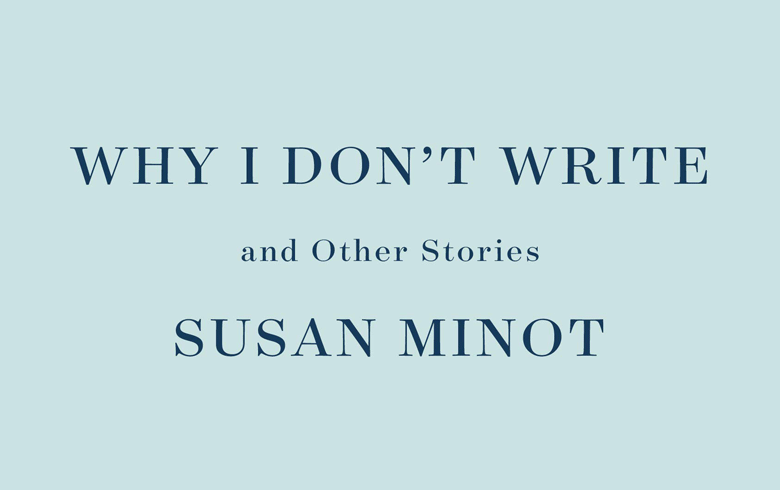Why I Don’t Write and Other Stories
By Susan Minot; 176 pages, hardcover, $25.
In American short fiction of the past 50 or 60 years, there is to my ear a certain distinct prose style that a lot of creative writing types work hard to emulate, often, or usually, or always in hopes of getting published in The New Yorker magazine or its ersatz literary satellites.
The stories usually involve hyper-realistic events in the lives of hyper-realistic everyday people. They’re told in carefully contrived, subject-verb-object grammatical structures that repeat throughout the narrative. The effect of the sentences is that of flat objectivity, even emotionlessness. The flatness is enlivened by careful placement of grammatical variations on the subject-verb-object structure, and the objectivity by understated ironies that often allow a certain glibness to leak through. The sentences are usually so deftly crafted that they have a certain aesthetic entertainment value in and of themselves.
The 60-year-old Sophie seems ambivalent about what she did and why.
Susan Minot, a resident of New York City and North Haven island, is a master of this literary style. Her recent book, Why I Don’t Write and Other Stories, is compiled from stories published from the early 1990s to the last few years. Most of the stories are, true to their genre, about everyday people with everyday conflicts. Some of their recurrent themes are relationships; the tendency of men to treat women like naive children, when usually the opposite is true; the emotional insecurities that are sometimes imposed upon, sometimes internally manufactured by women; the frictions inside family relationships.
A story that starkly unfolds some of these themes is “The Language of Cats and Dogs.” Sophie, a woman presumably in her 60s, dwells on emotional tumults she suffered decades before in college. Her creative writing professor, a known philanderer, made clumsy, offensive passes at her, which in tandem with the sudden death of her mother threw Sophie for a complicated emotional loop.
One of the complications is that Sophie saw completely through the professor’s ridiculous behavior, yet maintained an aloof, hyper-rational, almost numb bearing in response. The 60-year-old Sophie seems ambivalent about what she did and why. (At least some parts of this story are apparently autobiographical.) It is an affecting, emotionally probing story, either in spite of or because of the spare style it’s told in.
“Boston Common at Twilight,” for my money the other really memorable story here, provides a sort of parallel male perspective on somewhat similar material. Ned looks back from middle age on a period of time in his high school days which involved his naive rebelliousness, an extremely ugly incident stemming from it, his parents’ divorce, and the complexities these fraught circumstances created in his relationship with his brother. The story ends on a note of short-circuited ambivalence altogether appropriate to Ned’s short-circuited character.
This, like most of the other nine stories in the collection, is given in flat, hyper-objective, skillfully revealing prose. Stories that depart from this style and subject matter are “Why I Don’t Write” and “Listen,” literary experiments comprising what seem like assemblies of overheard sentences and phrases. “Café Mort,” meanwhile, a more conventional narrative, is nonetheless a fantasy in which a bustling café turns out to be a kind of surreal limbo place for dead spirits. The narrator is a waitress who (we feel) is not entirely sure what is going on but, true to one of Minot’s basic sensibilities, nonetheless seems to have a better grip on things than other café staff and customers. It’s my favorite story in the book.
Another way of describing Why I Don’t Write is to say it is very urban, upscale fiction. If you have a taste for, or an ambition to, the New Yorker and its literary environs, you’ll probably like these stories.
Minot’s other books include Rapture and Thirty Girls, among others. Her play On Island premiered at Waterman’s Community Center theater on North Haven in 2018, and she is a contributor to the “We Belong Here” oral history project—webelonghereproject.org—of the North Haven Historical Society.
Dana Wilde, a former editor and college professor, lives in Troy and writes the Backyard Naturalist and Off Radar columns for the centralmaine.com newspapers. He is a member of the National Book Critics Circle.





